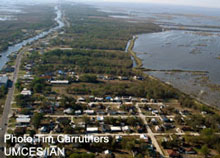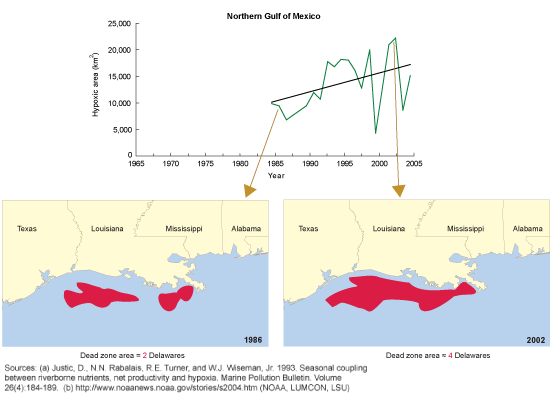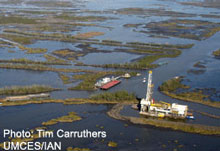 The Mississippi River drains the vast agricultural land of the Midwestern United States, sometimes referred to as the “Breadbasket of America.” One consequence of the large area of the Mississippi River watershed is that extremely high loads of nutrients are released into the Gulf of Mexico each year. These nutrient loads, which increased following the fertilizer boom of the 1950s and 1960s, have fueled an ever-increasing dead zone in the northern Gulf of Mexico. Intensive efforts to decrease nutrient loads to the Gulf have not yet been successful in minimizing the size of the dead zone, and recent research indicates that the dead zone is growing even larger than scientists would have predicted based on the current nutrient loads.
The Mississippi River drains the vast agricultural land of the Midwestern United States, sometimes referred to as the “Breadbasket of America.” One consequence of the large area of the Mississippi River watershed is that extremely high loads of nutrients are released into the Gulf of Mexico each year. These nutrient loads, which increased following the fertilizer boom of the 1950s and 1960s, have fueled an ever-increasing dead zone in the northern Gulf of Mexico. Intensive efforts to decrease nutrient loads to the Gulf have not yet been successful in minimizing the size of the dead zone, and recent research indicates that the dead zone is growing even larger than scientists would have predicted based on the current nutrient loads.

